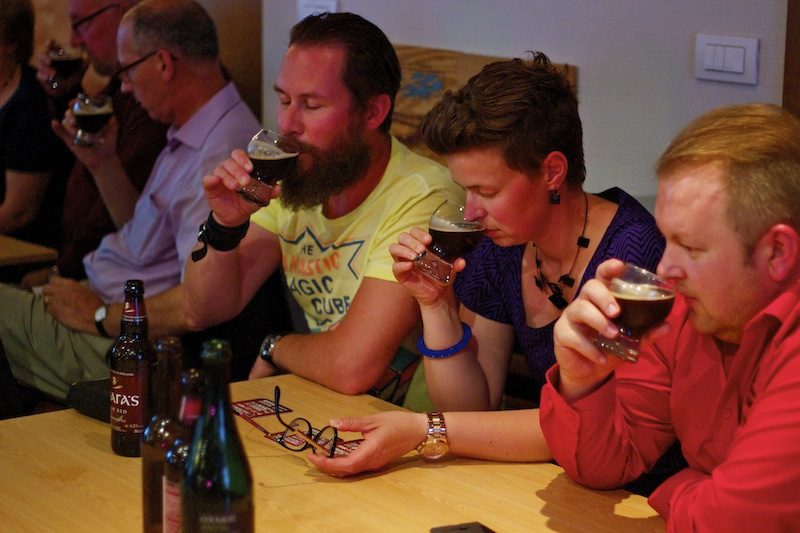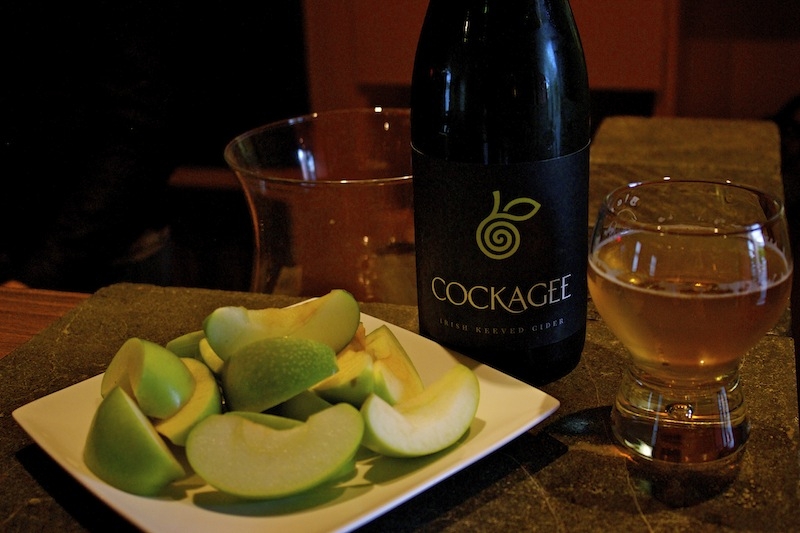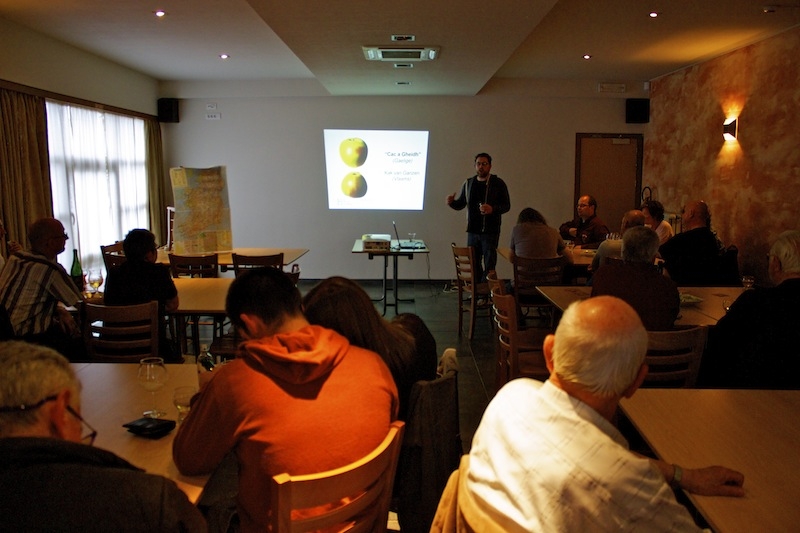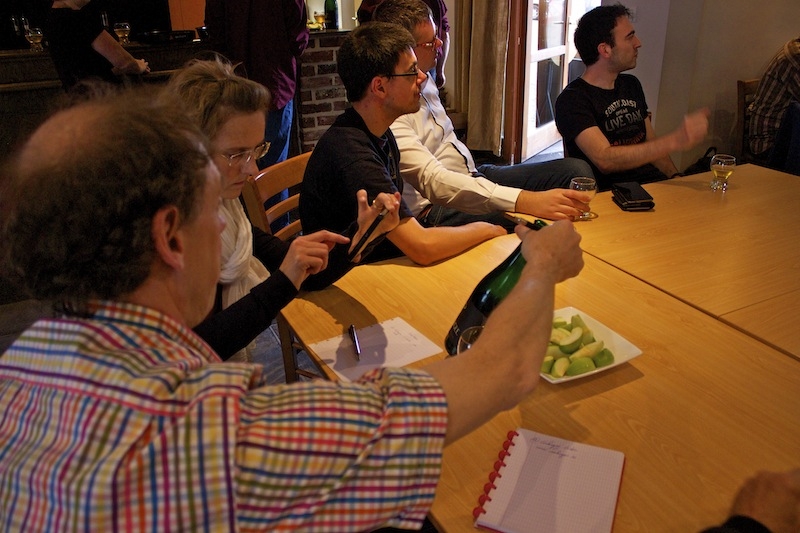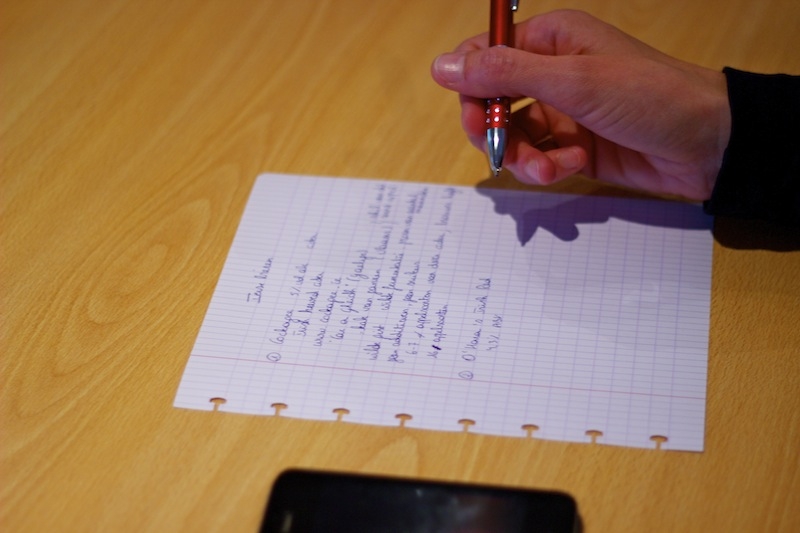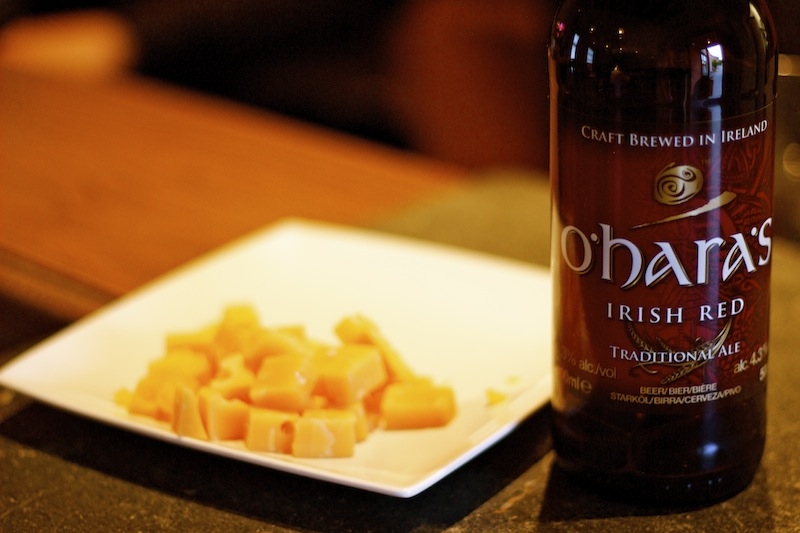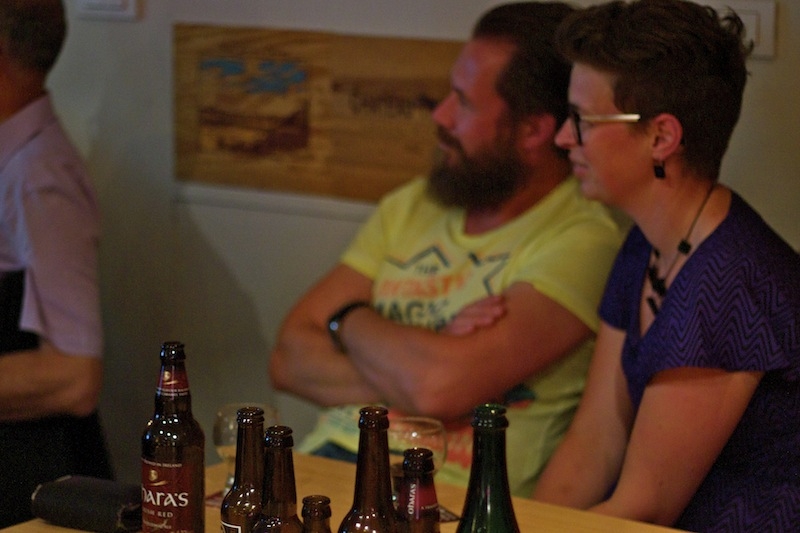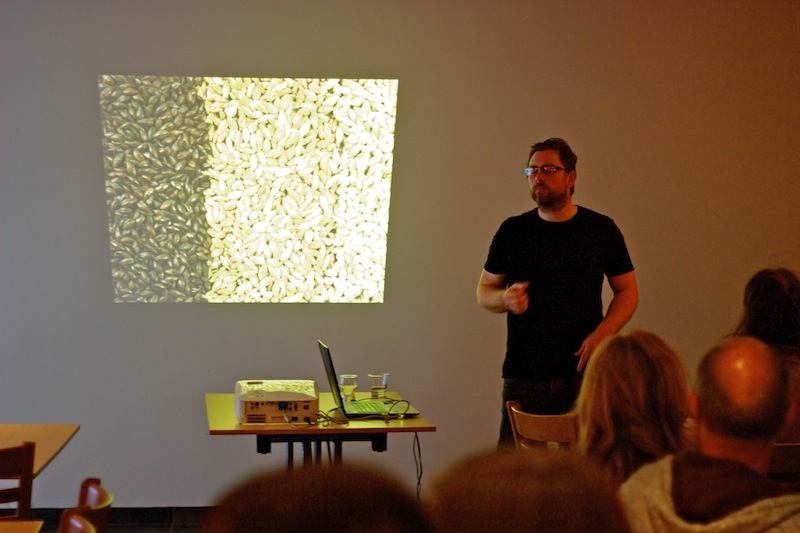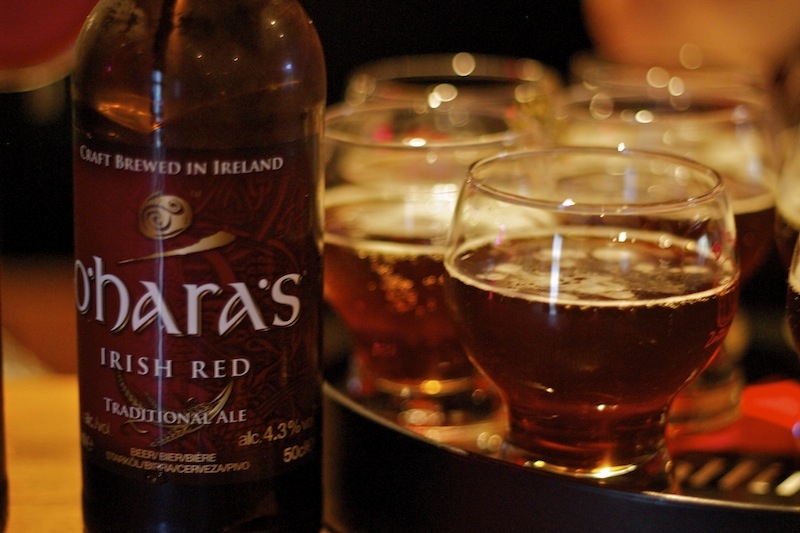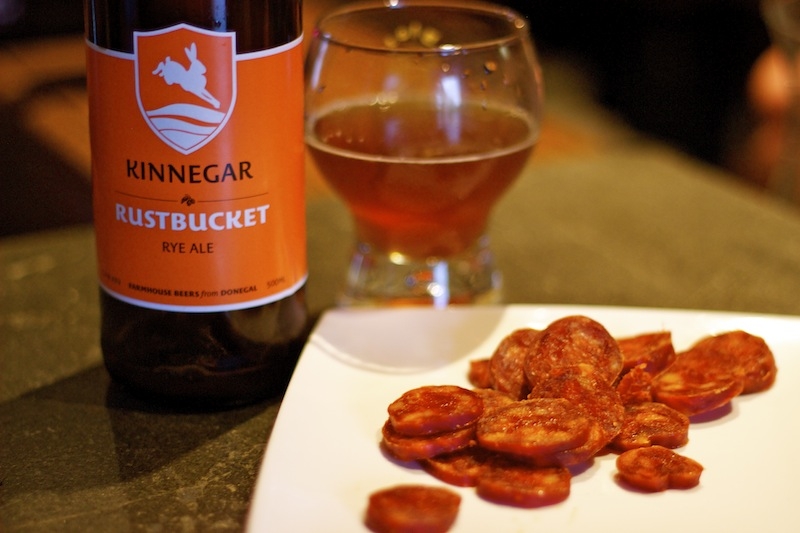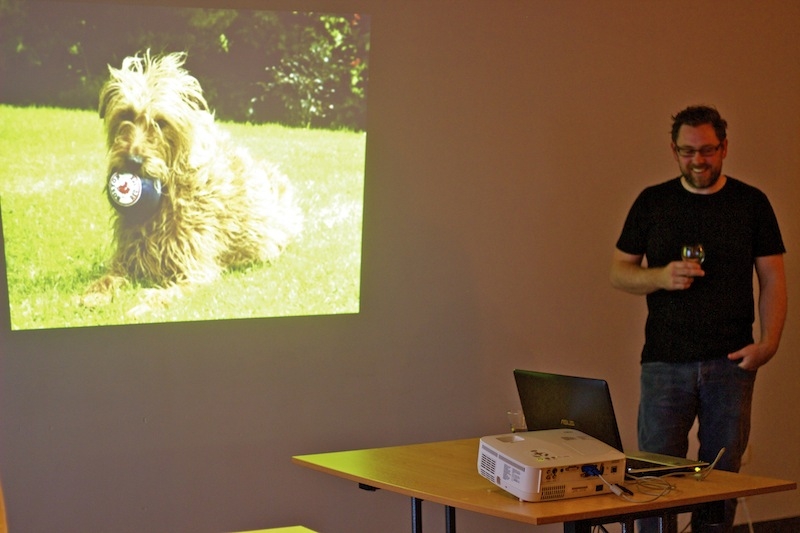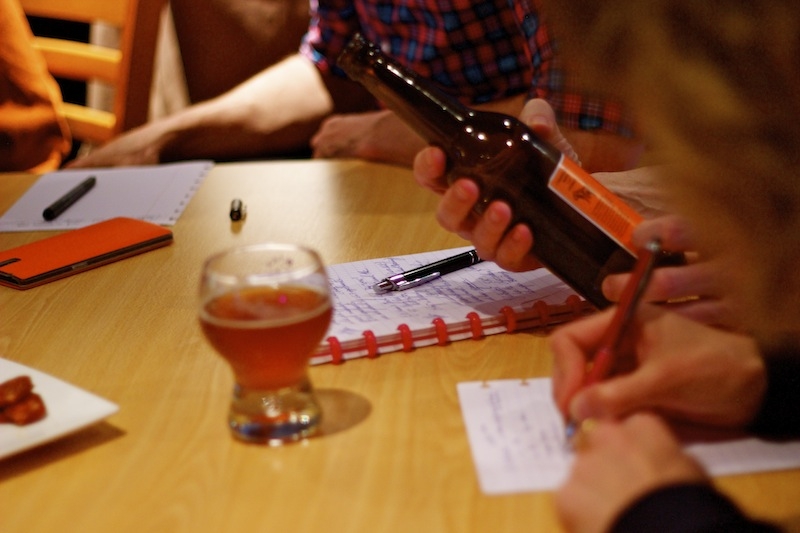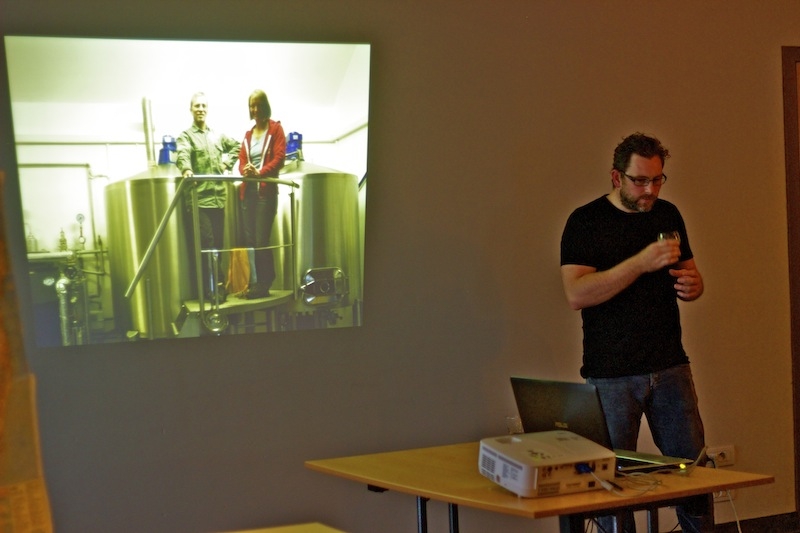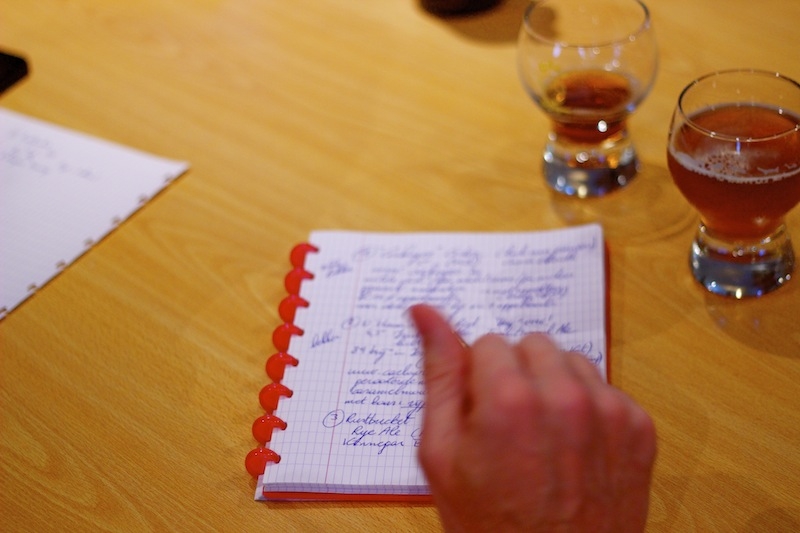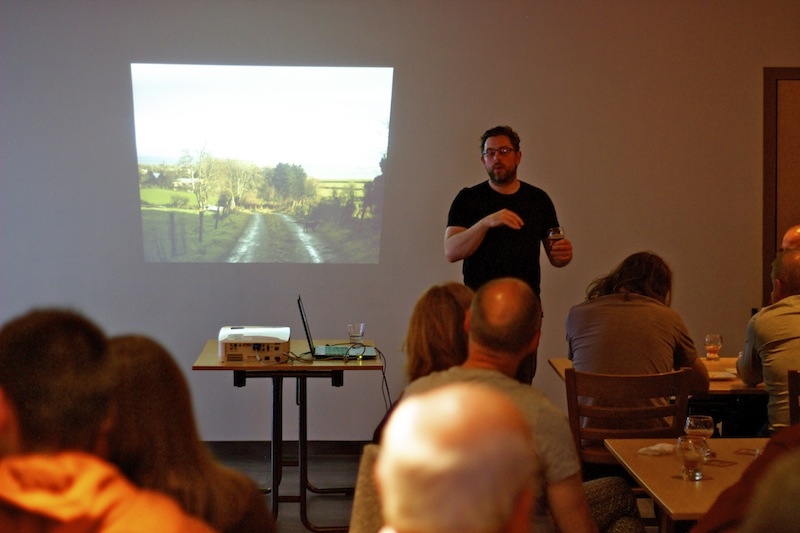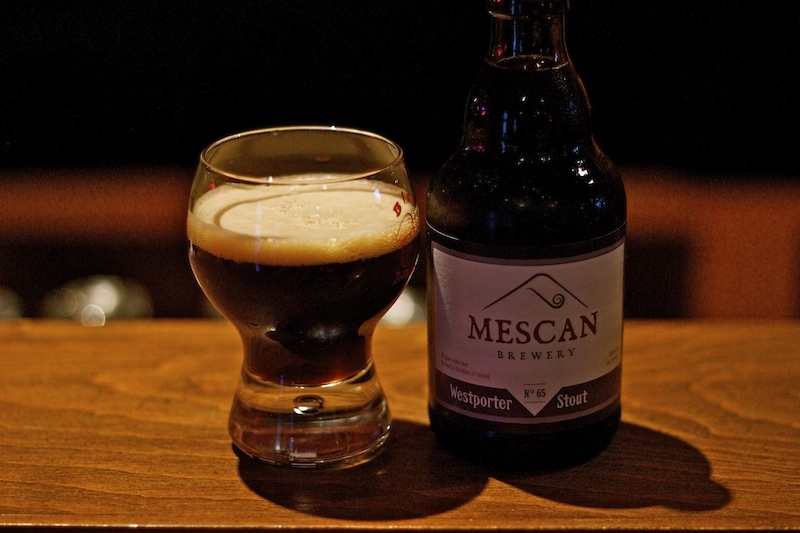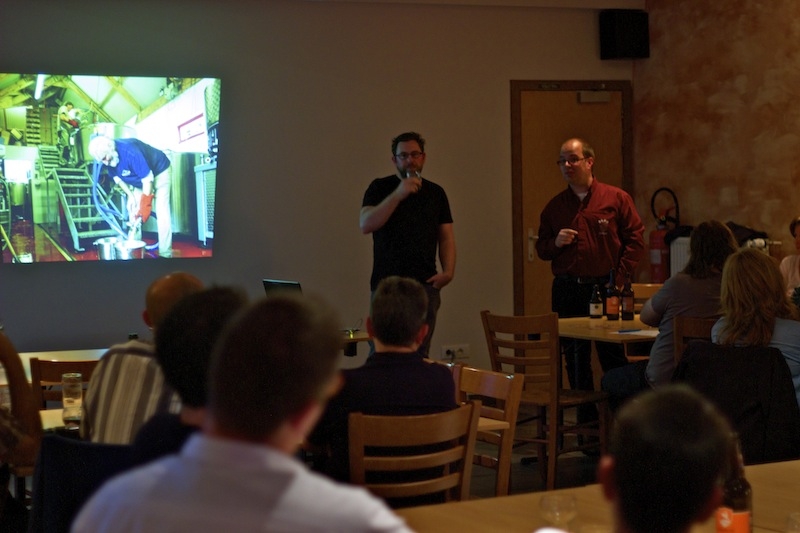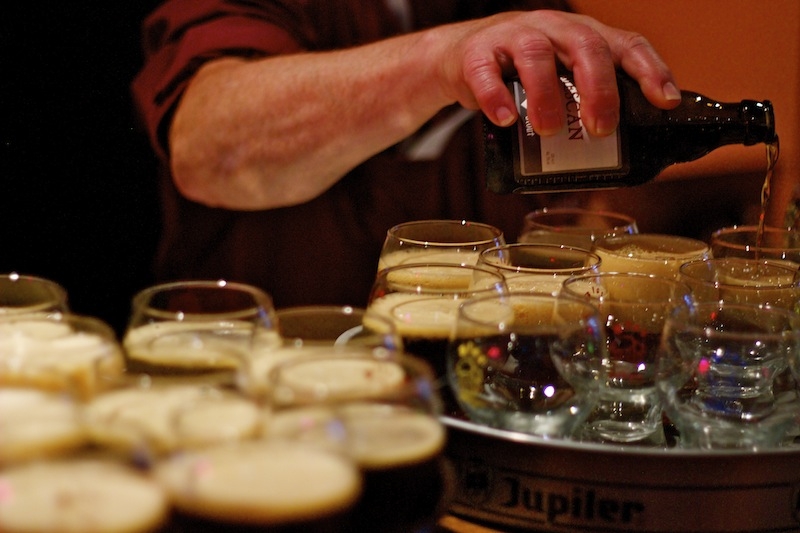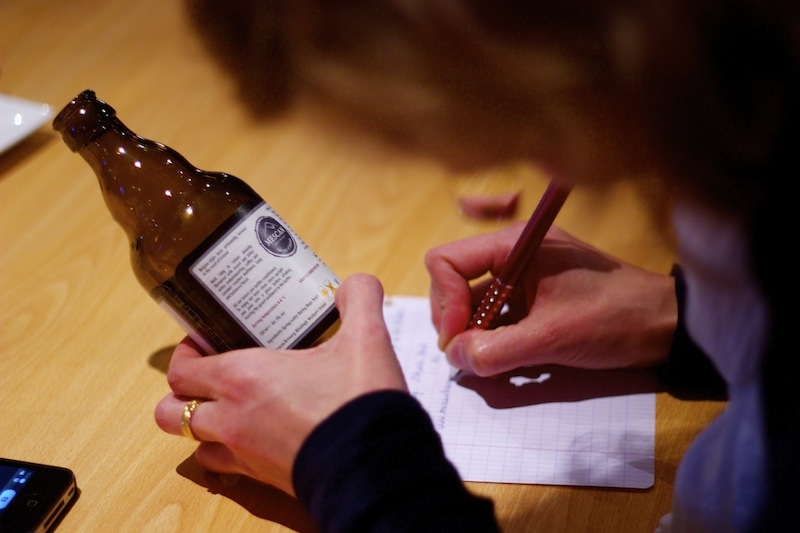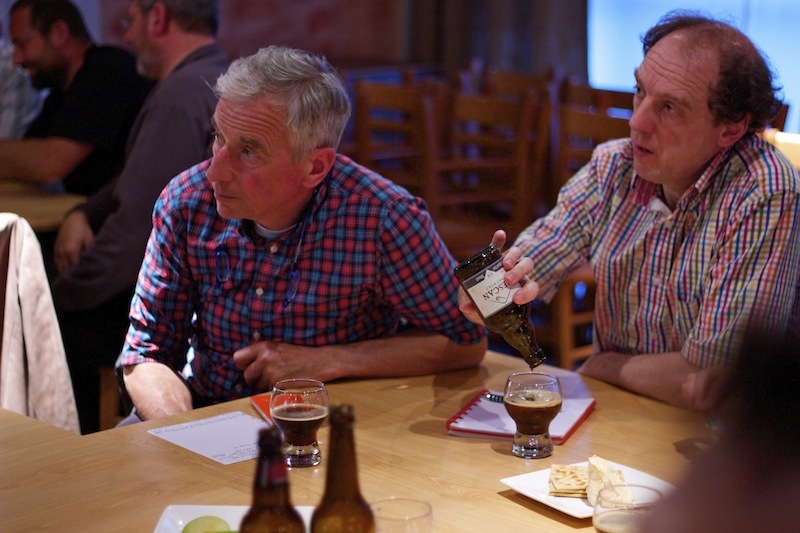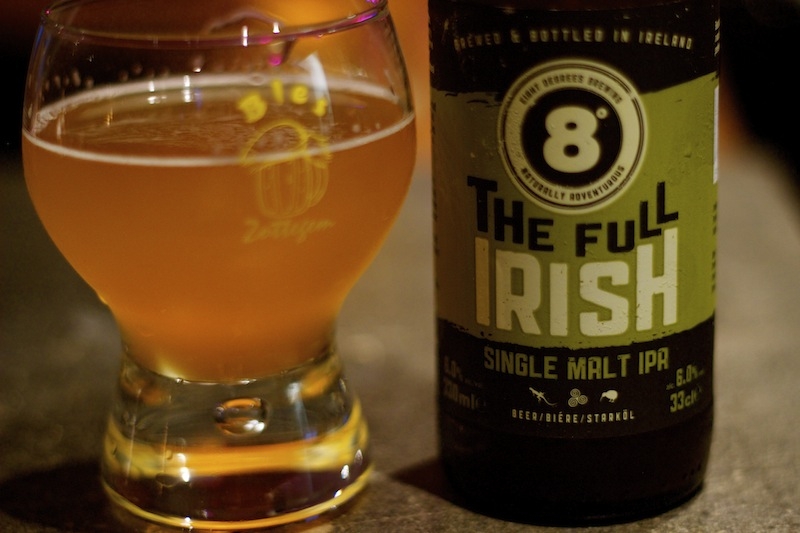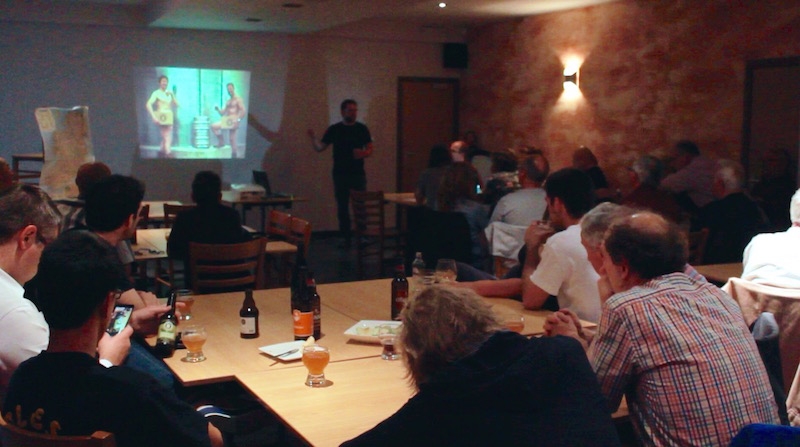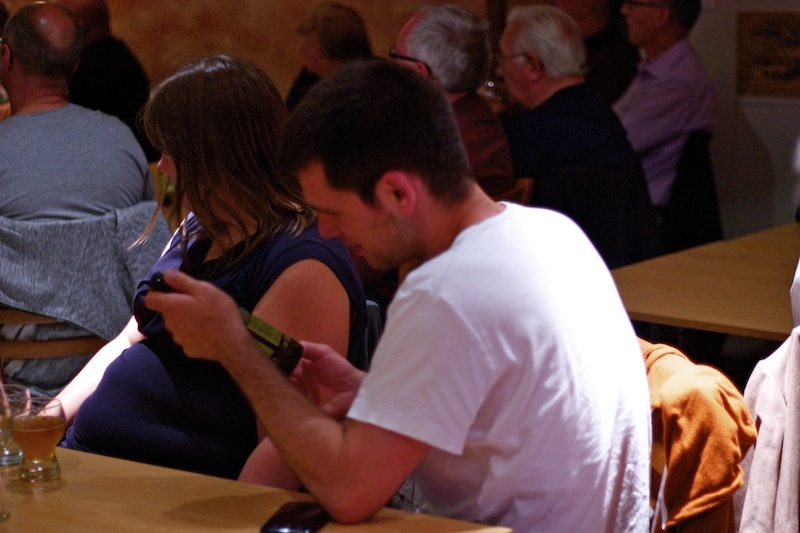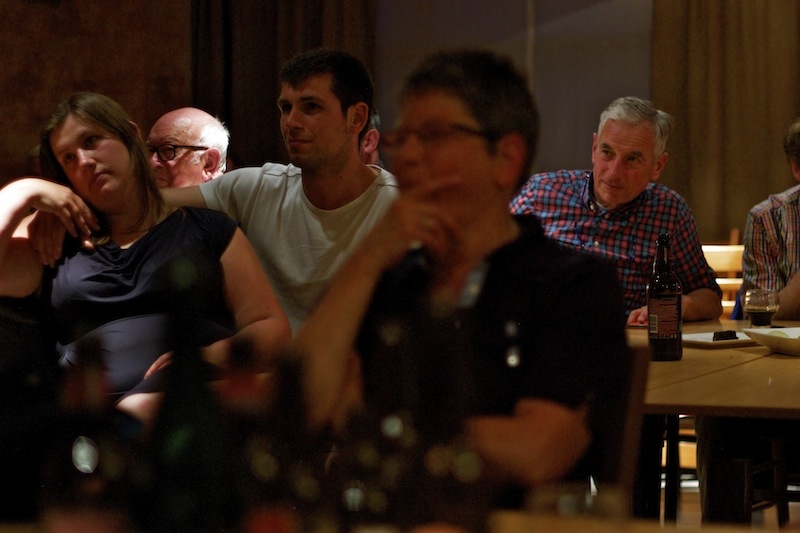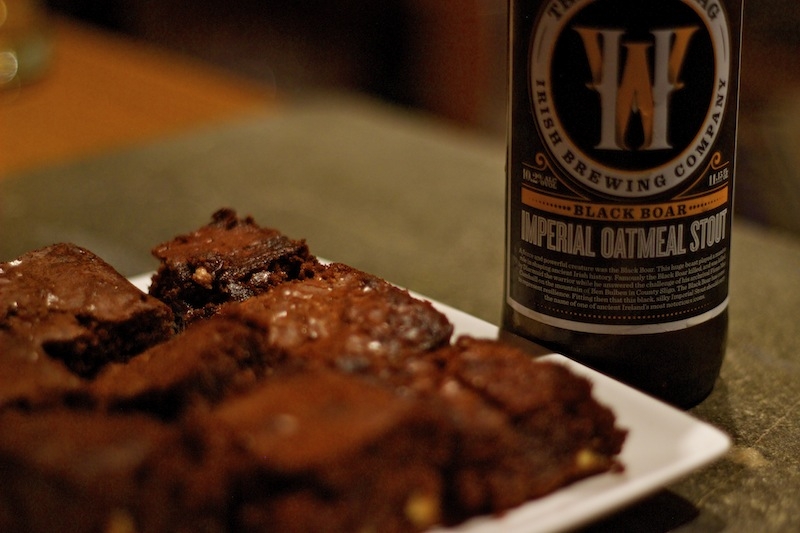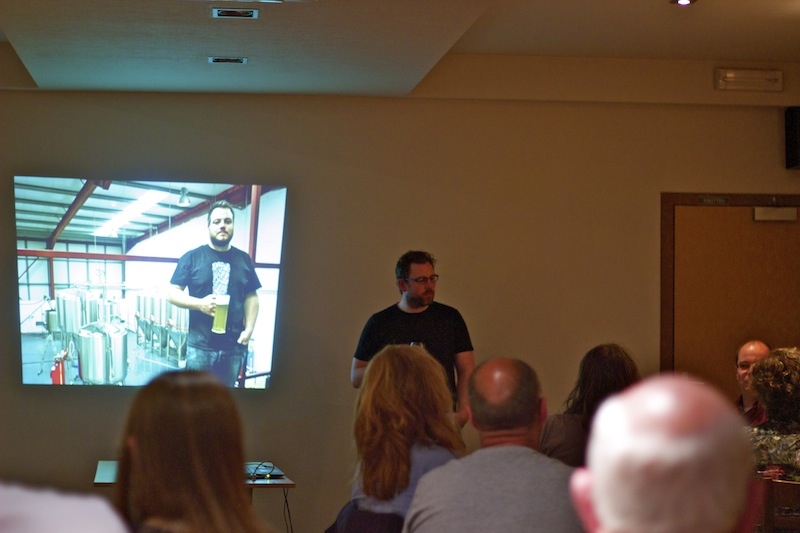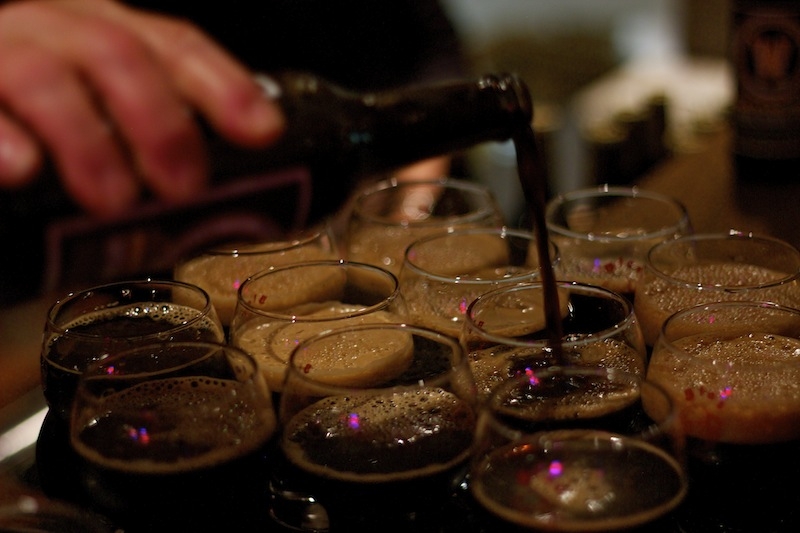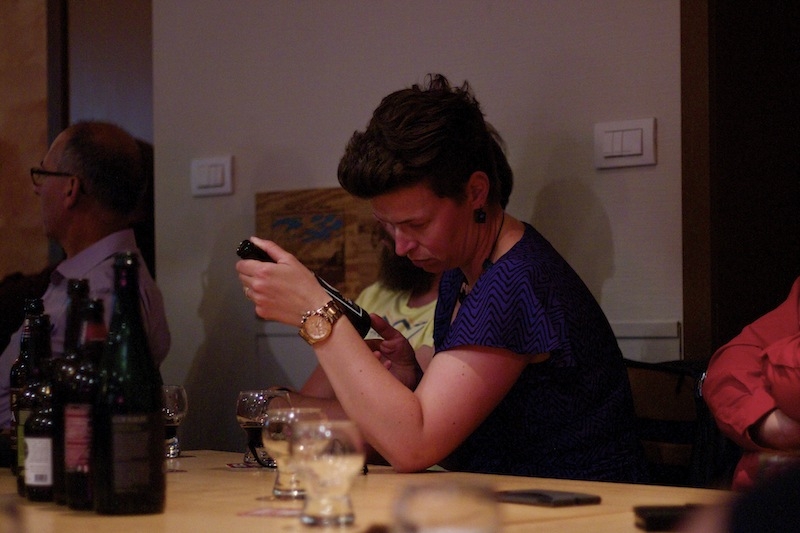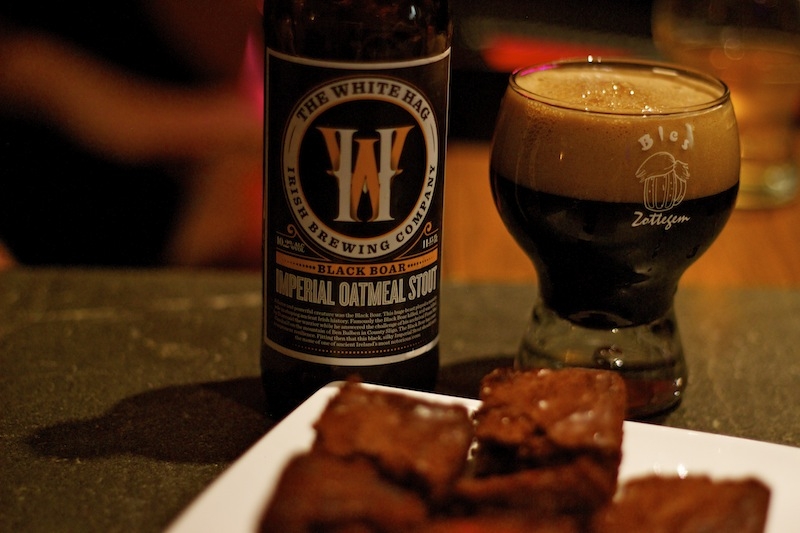It would be crazy to show off beer from another country in Belgium, right? Like bringing nuclear warheads to Russia. Or deadly animals to Australia. Crazy, I tell you.
So I have to get my thinking cap on when a beer club in Belgium ask me to deliver a tasting of Irish beers to their members for what turns out to be a unique Irish beer tasting in Zottegem.
The tasting is for BLES, De Bierliefhebbers van de Egmontstede (literally, the beer lovers of the Egmont city). They’re a beer club based in Zottegem in East Flanders and an affiliated member organisation of Zythos, the Belgian association of beer consumer groups.
Not only are BLES one of the oldest of the 45 beer clubs in Flanders (it started 22 years ago in 1993), they are the second largest beer club in Belgium.
IRISH BEERS
Which Irish beers do you choose for such an occasion? Classic interpretations of traditional Irish styles? Irish beers which have been influenced by international trends? Perhaps you just pick beers from the breweries with the best stories? Or try to identify themes which Belgians might find interesting?
Oh, and the beers should be great. This is Belgium after all.
1: COCKAGEE PURE IRISH KEEVED CIDER (5% ABV) / SLANE CIDER MILL
It’s a no-brainer really.
Kicking off a tasting of Irish beers with a cider not only demonstrates to Belgians how popular a drink this is in Ireland, but offers some of those sparkling and refreshing apple characteristics that are so admired in the spontaneously fermented beers of the Senne Valley and Pajottenland.
Belgians may not be as familiar with cider as they are with beer, but previous tastings in Belgium with Irish ciders have taught me that an introduction is worthwhile and the Cockagee Pure Irish Keeved Cider produced by Mark Jenkinson at Slane Cider Mill turns out to be a perfect aperitief.
It’s Ireland’s only keeved cider, a traditional way of making cider that is mostly only kept alive now in parts of France and the whole purpose of which is to achieve a very slow and gentle fermentation in order to preserve flavour, aroma and residual fruit sugars from the original apple must.
Its fermentation by wild yeasts – ambient in the orchard, apples, press house and equipment – takes between 8 and 12 months and is followed by a further 3-6 months of conditioning in the bottle so it’s an incredibly slow and unpredictable process and you have to really love it to do it. “It’s very time consuming and complex and far from an exact science”, Mark tells me. “I think it can only be learned by trial and error and a certain amount of intuition as each tank reacts differently.”
Among cidermakers keeving is recognised as the kind of ultimate or pinnacle of cidermaking, a kind of magical natural process that nobody fully understands, so I guess I was just drawn to it.
Mark has been making cider for 10 years now. “I started just for fun making apple juice and cider for friends and family and it’s only the last couple of years that I started turning it into a commercial proposition”, he says. He started dabbling in keeving in his second or third year, attracted by the romance of this type of production. “Among cidermakers keeving is recognised as the kind of ultimate or pinnacle of cidermaking, a kind of magical natural process that nobody fully understands, so I guess I was just drawn to it.”
The reason I choose this cider to begin – apart from its intensely rich, fruity and complex taste – is that its only ingredient is apples. Some ciders add various sugars, syrups or other juices, but Cockagee is made from 100% juice from Mark’s apples. He grows 60 different varieties but mostly uses Marie Mesnard, Laxtons Surberb, Golden Delicious, Lambourne, Elisons Orange, Dabinett, Douce Coitlyne and Kermerian in his cider. It’s all small scale too. “It’s very much farmhouse and small batch”, says Mark. “10-15 thousand litres per annum at the moment. I think I would be the smallest in the country.”
The Belgians love it, most passing comment that the Cockagee offers a fruitiness and subtle level of dryness but with none of the cloying sweetness they remember from the few macro ciders they have tried.
The greatest point of discussion, however, concerns the rather unusual name of the cider. Cockagee is the name of a once famous old Irish cider apple tree variety now thought to be extinct. The name in Irish is ‘Cac a Gheidh’, which translates as ‘goose shit green’ and refers to the unusual yellow-green colour of the fruit. I’m not sure whether the chuckles in the room are because of this humourous reference to colour or at the expense of my rather crude translation into Flemish – ‘Kak van Ganzen’.
Having won Best Medium Dry Irish Craft Cider at the Cider Ireland competition, Reserve Champion Best International Cider at the British Cider Championships and also second place Best Bottle Conditioned Cider at the International Cider & Perry Competition in Hereford, it seems Cockagee is here to stay.
How do you like those apples?
2: O’HARA’S IRISH RED (4.3% ABV) / CARLOW BREWING COMPANY
Seamus O’Hara and Carlow Brewing Company were championing craft beer in Ireland long before twenty-somethings in Foxrock were smoking e-pipes and knitting in pubs and before hipsters on Shop Street with wooden bow-ties and twigs in their beards were starting businesses which convert digital files to VHS.
Showcasing O’Hara’s beer gives me the opportunity to highlight – with the help of some graphs kindly supplied by Beoir – just how different the Irish and Belgian brewing scenes are and just how respected O’Hara’s have become for leading the way in brewing beers with flavour. Throughout their success, they have continued to support Ireland’s other enthusiastic emerging brewers.
It is fitting then that the first beer of the night was their Irish Red Ale, a style of beer which utilises a small amount of roasted barley to deliver a background bitterness and dryness which balances out the sweeter notes of its caramel malt profile.
We had in mind that we would brew a traditional Irish red.
One of O’Hara’s brewers, Conor Donoghue explains to me that Carlow Brewing Company are looking to offer something classic. “We had in mind that we would brew a traditional Irish red”, he says. “Red ale is different to other styles due to its malt flavour, light sweetness and very light hoppiness.”
It’s a style almost impossible to find in Belgium and on pouring, it’s clear that it’s quite unfamiliar to the BLES members. The pale ale malt, cara malt and crystal malt all combine to give a caramel, toffee, nuttiness in character which they recognise from Scotch Ales and some malt forward Belgian Ales.
But it’s the coffee and light chocolate flavours from the roasted barley that surprise the Belgians with the hop character of the challenger hops staying well in the background at 28 IBUs.
“Scottish ales would be a bit sweeter while a bit more roasted barley in an Irish red makes it a bit drier”, Conor tells me. “American reds or ambers on the other hand tend to be a lot more hoppy and have a much wider variation in colour, sweetness and flavour.”
Perhaps the success of the beer for O’Hara’s is its approachability to those new to beer as well as its suitability for the more seasoned drinkers. It’s a perfect match for mature cheddar cheese. But this is Belgium and cheddar is harder to come by, so I pair the beer with the full flavoured Reypenaer, a Gouda family member which does a great job of complimenting the beer’s strong malt character.
3. RUSTBUCKET RYE ALE (5.1% ABV) / KINNEGAR BREWING
Without doubt, the next beer is the most appreciated beer of the evening. Rustbucket Rye Ale from Kinnegar Brewing is named after a dog previously owned by the brewery’s owners, Rick Le Vert and Libby Carton.
Rick and Libby met in New York and after some time living in other places (including Germany), finally made the move back to Ireland, first to Dublin and then in 2002 to the rural North West where Libby’s family owned a farm.
For me, he was the realisation of a long-held desire to achieve a lifestyle that was conducive to keeping a dog.
Rustbucket came with them. He was an Irish terrier they acquired from an Irish convent on Baggot Street where he had been bred by the caretaker family there. Besides becoming a much loved part of their family, Rusty represented a new way of life for a couple who had been travelling around and living in different cities. “For me, he was the realisation of a long-held desire to achieve a lifestyle that was conducive to keeping a dog”, says Libby.
Unfortunately, Rusty died in February 2013. At that stage, Libby and Rick were brewing in their pilot brewery and developing their fourth beer (after Limeburner, Devil’s Backbone and Scraggy Bay).
“Rusty was our Irish Terrier and he died at the same time we were developing the beer”, says Libby. “He was a wonderful and much-loved character and fully deserving of having a beer named after him!”
Even though as much as 20% of the grain bill is rye – designed to equip the beer with a subtle spiciness (which prompted me to pair it with some complimentary spicy sausage) – it is the wonderful aroma and present bitterness delivered by a plethora of new world hops which most impresses the BLES members.
Kinnegar had demanded to know the exact date of the tasting from me and their insistence on sending as fresh a batch as possible really paid off. “What we wanted was something with bite, something that would match the spicy dryness of rye with citrusy, fruity hop flavours”, says Rick.
The hop aromas absolutely sing from the glass. Varieties deployed include Amarillo, Citra, Columbus, Chinnook and Cascade, most of which are added late or used in dry hopping in the conditioning tank.
Rustbucket actually came about through a request by the local theatre company, An Grianán Theatre in Letterkenny. Libby and Rick also run a graphic design business and had enjoyed a fruitful relationship with the theatre when the visual identity they developed for An Grianán won the European Design Award for Best Logo.
The first few batches of Rustbucket were labeled with the An Grianán logo in addition to the Kinnegar one. The BLES members are fond not only of the beer, but spend some time chatting about the simple and elegant design on the label.
It’s a beer which won the Fan’s Favourite at the RDS last September (Irish Craft Beer Festival) and was awarded a silver medal in the recent Commonwealth Cup in Kentucky. It’s a fine example of skilled brewing in Ireland.
I’m guessing Rustbucket’s tail is wagging in the great dog kennel in the sky.
4. WESTPORTER STOUT (5% ABV) / MESCAN BREWERY
Even a night about Irish beer can’t escape the influence of Belgium’s far-reaching beer culture so there is plenty of interest in the following beer from Mescan Brewery.
They’re a two man artisanal operation producing Belgian style Irish beers on the slopes of Ireland’s holy mountain, Croagh Patrick, where St. Patrick fasted for forty days and forty nights back in the fifth century.
‘Croagh Patrick’ literally means ‘St. Patrick’s Stack’ and to replicate St. Patrick’s feat of religious fervour, pilgrims now climb the mountain in their droves, particularly on ‘Reek Sunday’, the last Sunday in July, when the custom is to attempt the 764 metres from sea level on barefoot.
The BLES members are intrigued by the link between the story of the mountain and the brewery itself. Mescan was a local priest and a close friend of St. Patrick but perhaps more importantly, he was also his personal brewer. This is all reflected in the brewery’s logo – a beautifully simple but wonderfully creative representation of the mountain and St. Patrick’s staff.
It’s no surprise that this brewery are making beers inspired by Belgium. One of the brewers, Bart Adons is from Genk in Belgium. The other is Cillian O’Móráin, originally from Dublin but who settled in Westport 15 years ago. The two met while working in the UK as vets.
The most similar place to Africa I could find in the world was the west of Ireland.
Before meeting Cillian on veterinary business in the UK, Bart spent 13 years in Kenya, Malawi, and Somalia working as a vet. He loved it. When we ask why he decided to come to Ireland, he tells us that “the most similar place to Africa I could find in the world was the west of Ireland”.
Dry stouts in Belgium are like sunny days in Ireland. Few and far between. They were once, however, quite popular. There are, of course, some great Belgian breweries producing versions which are ‘imperial’ in nature (and excellent, may I add) but many of the others are so sweet that they might be more accurately described as ‘Belgian Stouts’ in style. The Mescan Westporter Stout, with its toasted coffee notes and 5% ABV seems like something brand new to the BLES members in attendance.
I’m pairing it with Herve and crackers, a rind washed soft cheese so pungent and intense that several people are almost suffocated in its preparation. It’s a cheese that Belgians normally eat for breakfast with a smothering of liege syrup and a cup of strong black coffee. The Westporter Stout really stands up to its smoky nature and robust flavours and the Belgians are left in no doubt as to the etymology of the word ‘stout’.
5. THE FULL IRISH SINGLE MALT IPA (6% ABV) / EIGHT DEGREES BREWING
Sometimes on evenings like this – with so many beers and concentrating so hard on my butchering of the English language – people get tired and lose focus. If the coffee character of the Mescan Westporter Stout isn’t enough to keep the BLES group awake, then the photograph which introduces the next beer certainly has them sitting up in their seats paying attention.
In the photograph, the two founding brewers of Eight Degrees Brewing, Scott Baigen and Cam Wallace are going ‘Full Monty’ for their ‘Full Irish’ beer. Some of the ladies in the room express great disappointment that the beer crates are obscuring their full view and some of the men question why they’re not brave enough to go the full way. I carefully explain that these guys aren’t actually Irish, but from New Zealand and Australia respectively.
We had just installed a silo and mill so that we could source Irish grown-barley, malted in Cork, directly from the Malting Company of Ireland.
The Full Irish Single Malt IPA (to give it its full name) is a beer made from 100% Irish malt. Many Irish beers are made using malt from other countries in Europe – indeed some from Belgium – so to produce a beer made from barley which is grown and malted in Ireland was something Eight Degrees were keen to make some noise about (as well as taking off their clothes).
“We had just installed a silo and mill so that we could source Irish grown-barley, malted in Cork, directly from the Malting Company of Ireland”, says Caroline Hennessy of Eight Degrees who explained to me that the whole ‘raison d’être’ of the Full Irish was to showcase Irish malt. “We were very proud to use this in our beer and wanted to really put it on show.”
The Full Irish was first released for the 2014 Franciscan Well EasterFest and so positive was the feedback from people at that festival, that Eight Degrees added it to their Premium range in July 2014. Beer drinkers in Ireland continue to be impressed. Ireland’s beer consumer group, Beoir, named the Full Irish their ‘Beer of the Year’ in February 2015.
It may be a beer made with 100% Irish malt, but as with pretty much all good IPAs, it’s the hop that takes centre stage in Zottegem, with a bitterness level clocking in at 65 IBUs and a clean, tropical fruit-led hop aroma resultant from the use of Centennial, Citra and Amarillo.
There’s also another hop variety deployed with which BLES are quite familiar – Ahtanum – given that they used it to brew their 2014 beer for the annual BLES festival, the ‘bierhappening’.
I wonder to myself if the photo and beer will inspire anyone to disrobe, but alas, Belgians have much more sense and everyone remains fully clothed. Maybe the last beer would prompt some nudity?
6. BLACK BOAR IMPERIAL OATMEAL STOUT (10.2% ABV) THE WHITE HAG BREWERY
The final of the Irish beers is the biggest; an Imperial Stout of 10.2% ABV called Black Boar from The White Hag Brewery in Ballymote, Co. Sligo.
Having visited the brewery shortly after it opened in 2014, I had the pleasure of meeting the brewer, Joe Kearns, an American who brought his family over to Ireland so that he could brew more experimental and extreme beers, and who channels all his Irish ancestry in this unforgettable stout.
If White Hag are lucky to have an excellent brewer in Joe, they are also fortunate to call Pádraig Staunton one of their own. Pádraig is a historian and takes responsibility for the naming of the White Hag beers. This oatmeal imperial stout is named after the notorious icon in ancient Irish mythology of the Black Boar who killed and was killed by the famous warrior Diarmuid while he answered the challenge of his archrival Fionn Mac Cumhaill. This is all said to have taken place on the mountain of Ben Bulben which stands only 40 kms north of the White Hag brewery.
The White Hag make no secret that the bulk of their brewing activity is for export, particularly for the American market. Knowing that Ireland is famous for stouts, Joe was keen to deliver something that would stand out above other Irish dry stouts. He used a range of special malts – including Irish stout malt base, Irish flaked oats and roasted barley – together with a bunch of English Fuggle hops, all of which combine to achieve a rich and silky, but roasty and booze-laden Russian Imperial Stout.
Belgians export around 60% of their beer to markets around the world, so the BLES members are particularly interested to learn that the Black Boar was never actually intended for Ireland, a decision presumably taken not only because of Ireland’s high taxation on big beers but because of the brewery’s strategic marketing vision.
As a consequence, a mere 600 litres of Black Boar was released into Ireland in 2014. Even with such a small amount, members of the independent beer consumer group in Ireland, Beoir, voted it as the 2nd best beer in Ireland for that year, quite an achievement for a beer not readily available.
The BLES members like the story I tell of the White Hag turning up to the 2014 Irish Craft Beer Festival, completely unknown, with not the normal offering of 2-3 beers that most new breweries bring, but a whopping 7 beers on tap, each one of them receiving an incredible reception. The Black Boar was one of the 7 and won the ‘Fan Favourite’ award at the festival. That’s some introduction.
If Kinnegar’s Rustbucket is the most well-received beer among the general gathering, then the Black Boar is the stand-out favourite of the self-proclaimed beer geeks in attendance.
But this imperial oatmeal stout isn’t the biggest talking point of the night. In fact, none of the beers are. That honour falls to Elisa’s homemade chocolate brownies which we pair up with the Black Boar, complimenting its intense sweet chocolateyness and creamy body.
To try to describe to you in words just how mouth watering a taste combination these two were would be futile.
So I’m just going to stop now.


